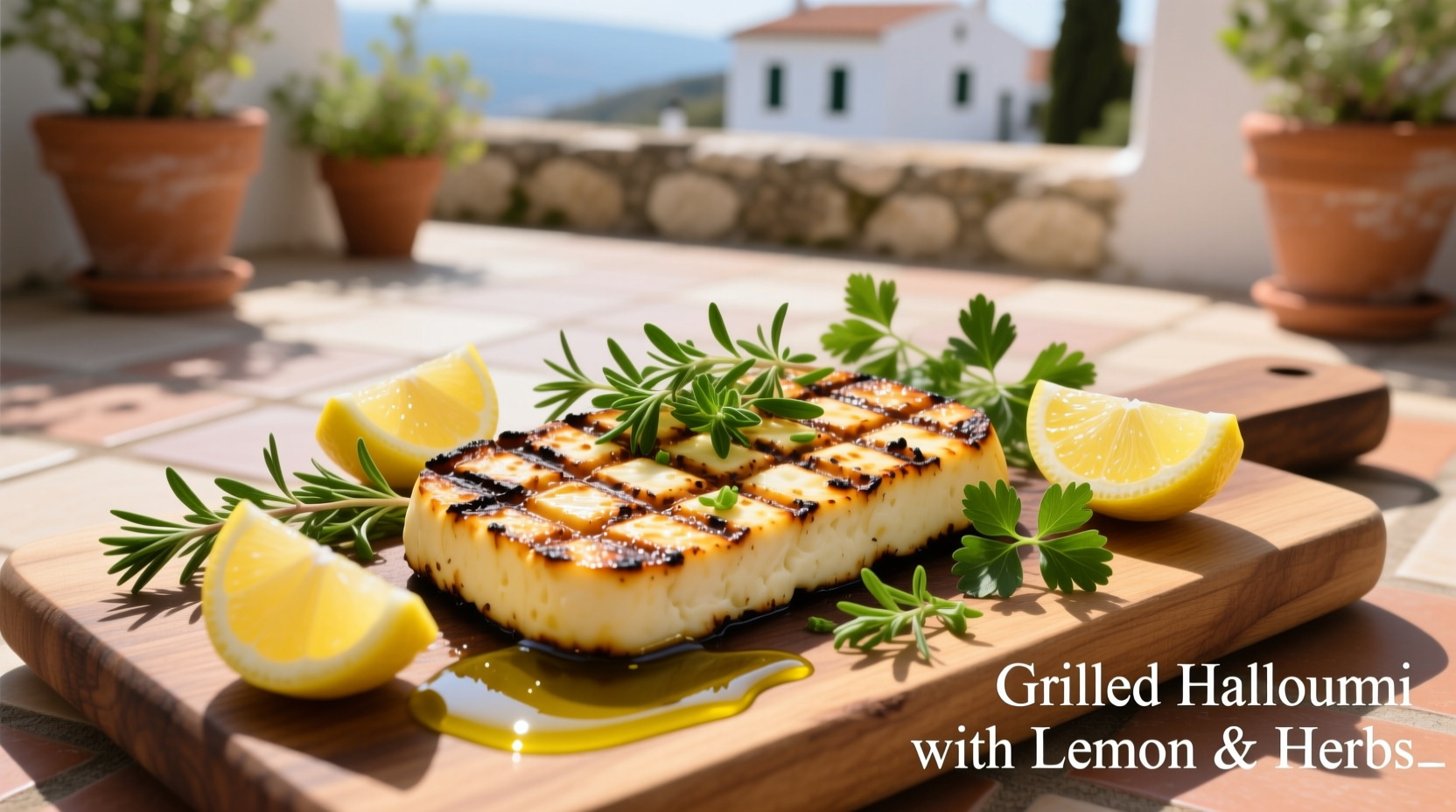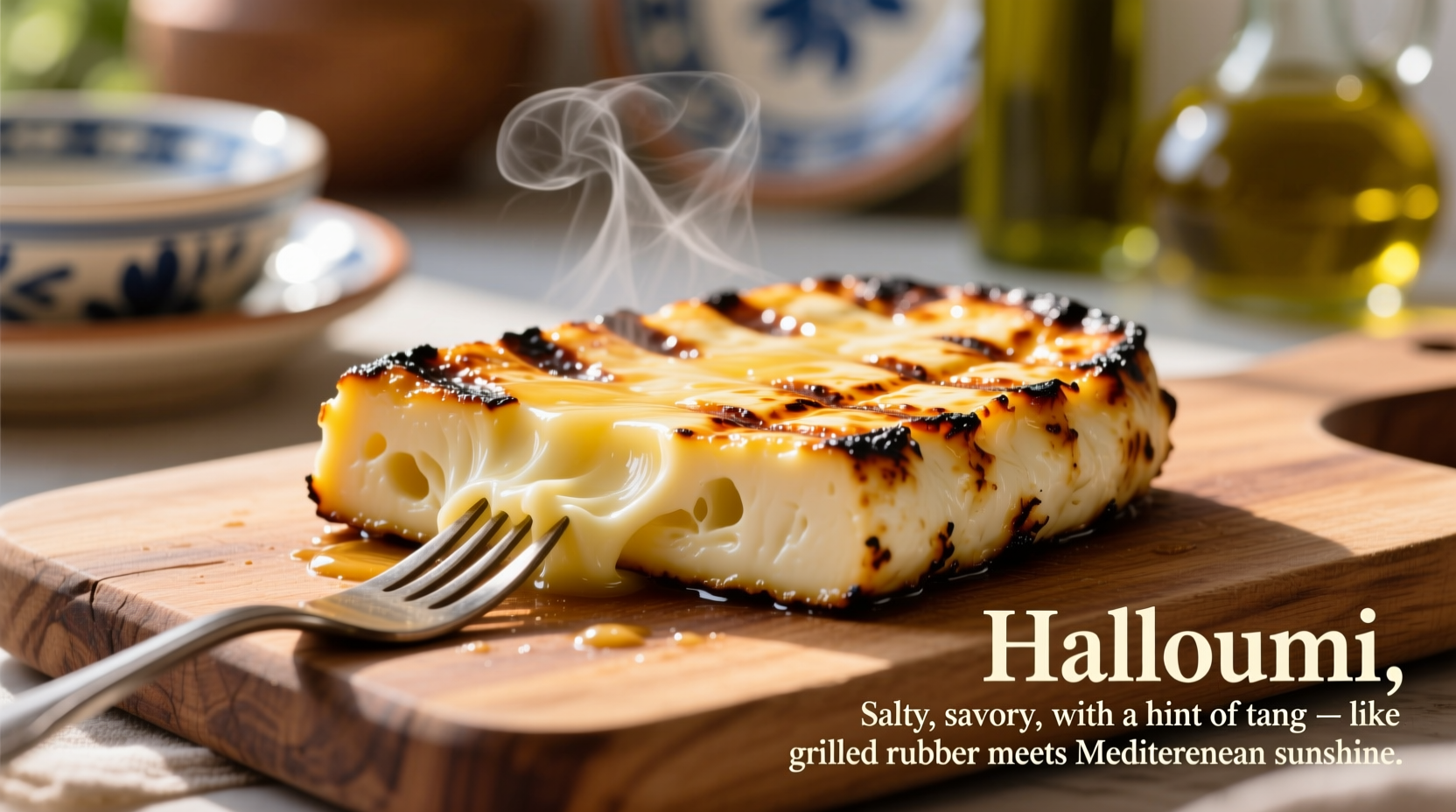Ever wondered what halloumi cheese tastes like before trying it? This unique Cypriot cheese has gained global popularity for good reason. As a French-trained chef specializing in European culinary traditions, I've worked with halloumi across dozens of recipes and can tell you exactly what to expect from this remarkable cheese.
Your First Encounter with Halloumi's Flavor
When you first sample raw halloumi, you'll notice its signature saltiness immediately. This isn't accidental—it's traditionally preserved in brine, which gives it that characteristic savory punch. But there's more beneath the surface:
- Milky foundation—a clean dairy flavor reminiscent of fresh sheep's milk
- Subtle tang—a mild lactic acidity that balances the salt
- Neutral backdrop—unlike aged cheeses, it lacks strong fermented notes
- Herbal undertones—depending on the animals' diet, you might detect grassy or floral hints
Texture plays a crucial role in halloumi's sensory experience. Its dense, springy consistency provides a satisfying chew that sets it apart from crumbly cheeses like feta. This structural integrity is why halloumi performs so well in high-heat cooking—a quality that directly impacts how we experience its flavor.
How Cooking Transforms Halloumi's Taste Profile
The real magic happens when you cook halloumi. Unlike most cheeses that melt, halloumi maintains its shape while developing complex new flavor dimensions:
When you grill halloumi over medium-high heat for 2-3 minutes per side, watch for these flavor transformations:
- The surface develops a beautiful golden-brown crust that adds nutty, caramelized notes
- Internal moisture concentrates, intensifying the salty-milky base flavor
- Heat activates Maillard reactions, creating savory umami compounds
- The texture becomes delightfully chewy with a slight bounce
Professional chefs often recommend soaking halloumi in cold water for 10-15 minutes before cooking to moderate its saltiness, especially with commercially produced varieties that sometimes overcompensate with brine. This simple step reveals more nuanced dairy flavors while preserving that essential halloumi character.

What Influences Halloumi's Flavor Variations
Not all halloumi tastes identical. Several factors create subtle but noticeable differences in flavor profile:
| Factor | Flavor Impact | Quality Indicator |
|---|---|---|
| Milk composition | Traditional sheep's milk: richer, earthier flavor Goat's milk addition: slightly tangier profile Cow's milk versions: milder, less complex |
Premium halloumi uses minimum 80% sheep's milk |
| Brine concentration | Higher salt content: more pronounced salinity Proper balance: salt enhances rather than dominates |
Shouldn't require soaking to be palatable |
| Production region | Cypriot traditional: complex herbal notes European versions: often milder, standardized flavor Commercial brands: can be overly salty |
Protected designation of origin (PDO) Cypriot halloumi offers authentic flavor |
Common Halloumi Taste Misconceptions
Several myths persist about halloumi's flavor that might prevent you from fully enjoying it:
"Halloumi is just salty"—While salt is prominent, quality halloumi has a balanced flavor profile where salt enhances rather than overwhelms the dairy notes. Proper preparation (like brief soaking) reveals more complexity.
"All halloumi tastes the same"—Artisanal producers create noticeable variations based on milk source, aging time, and brine composition. Traditional Cypriot halloumi often has more nuanced herbal notes compared to mass-produced versions.
"It's similar to paneer"—Though both are grilling cheeses, halloumi has a saltier, more pronounced flavor while paneer is nearly flavorless and absorbs surrounding seasonings.
Maximizing Halloumi's Flavor in Your Kitchen
Understanding halloumi's taste profile helps you use it effectively in recipes. Here's how to work with its unique characteristics:
Pairing principles: Balance halloumi's saltiness with acidic or sweet elements. Fresh lemon juice, watermelon, honey, or balsamic reduction create perfect counterpoints. The classic Cypriot combination of halloumi with watermelon and mint isn't just visually appealing—it's a flavor masterpiece where sweet, salty, and fresh elements dance together.
Cooking temperature matters: Medium-high heat creates the ideal crust without burning. Too low and you won't develop those delicious caramelized notes; too high and the exterior burns before the interior warms through.
Timing is crucial: Remove halloumi from heat just as it develops golden grill marks. It continues cooking from residual heat, so pulling it off a moment early prevents overcooking that can make it tough.
For Mediterranean salads, I recommend slicing halloumi 1/2 inch thick and grilling just until marks appear—this creates textural contrast with crisp vegetables while maintaining that signature chew. In sandwiches, thinner slices work better as they integrate more seamlessly with other ingredients.
Storing Halloumi to Preserve Flavor Quality
Proper storage maintains halloumi's optimal taste profile. Keep unopened packages submerged in their brine in the refrigerator. Once opened, transfer to a container with fresh brine (1 tablespoon salt dissolved in 1 cup water) and change the solution every 2-3 days. This preserves both flavor and texture far better than dry storage methods.
Interestingly, halloumi actually improves slightly after opening—allowing it to rest in fresh brine for 24 hours lets flavors mellow and integrate. This simple step transforms many commercially salty varieties into more balanced, nuanced cheese ready for cooking.











 浙公网安备
33010002000092号
浙公网安备
33010002000092号 浙B2-20120091-4
浙B2-20120091-4